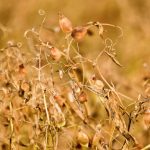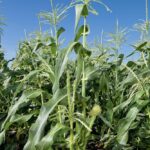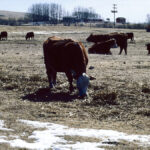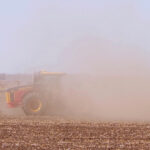MarketsFarm — As the snow melts on the Prairies, pulse growers are making their final preparations before seeding, while at the same time hoping not to see a repeat of last year’s historic drought. In Saskatchewan, snow cover has varied in pulse-growing areas, making some growers nervous. “There’s still a lot of concern about dryness […] Read more

Pulse weekly outlook: Saskatchewan growers wait for rain

U.N. to roll out global early-warning systems for extreme weather
London | Reuters –– With climate change fueling dangerous weather worldwide, the United Nations is pledging that early-warning weather monitoring will cover everyone on the planet in five years. “Half of humanity is already in the danger zone,” U.N. Secretary-General António Guterres said earlier this week. And yet, “one-third of the world’s people, mainly in […] Read more

A small silver lining in 2021: Drought pushes down fusarium levels
And planting fusarium-free seed gives growers a chance to push them down a bit further
Reading Time: 3 minutes Last summer’s drought drove down fusarium head blight levels across the province. But it’s still lurking, and increasingly that’s happening in parts of the province that have been spared in the past. “This year, just over five per cent of samples that we’re testing from Alberta have been positive for fusarium graminearum,” said Trevor Blois, […] Read more

Bayer rolling out short corn variety tolerant of weather extremes
Reuters — Global farm chemicals and seeds maker Bayer will launch a corn variety in the United States next year that it says will better tolerate heavy winds associated with climate change, estimating future sales in North America as high as one billion euros. The corn, which grows one-third shorter than current varieties, will be […] Read more

Making it real: Get the lowdown on climate on your farm
Stefan Kienzle has made decades’ worth of very detailed, very local weather data easily accessible
Reading Time: 6 minutes More growing days. Fewer days of frost. And more extreme weather: both drought-inducing heat waves and bitterly cold stretches. That’s the reality of climate change but are those changes happening on your farm? Now you can find out thanks to an easy-to-use website that details precipitation, temperature and growing days on virtually any chunk of […] Read more

Farmers are better able to cope with dry times, say veteran producers
Reducing moisture loss through practices such as no till and rotational grazing are major advances
Reading Time: 3 minutes A series of droughts in the ’80s was a defining event for a generation of Alberta farmers. But two producers who farmed through those times have a hopeful message: Better technology and management practices have put farmers in a much better position to handle extreme weather. “In the mid-’80s — 1982 through 1985 — we […] Read more

Drought assistance deadline is Jan. 31
Reading Time: < 1 minute Phase 2 of the emergency drought relief program for livestock producers is now taking applications — but only until Jan. 31. Producers hit by drought were eligible for a payment of $94 per breeding cow in the first round. In the second phase, they can get an additional payment for extraordinary feed costs (to a […] Read more

Last year was world’s sixth-warmest on record, U.S. scientists say
Heat content of oceans at record level, NOAA says
Reuters — Last year ranked as the sixth-warmest year on record, causing extreme weather events around the world and adding to evidence supporting the globe’s long-term warming, according to an analysis on Thursday by two U.S. government agencies. The data compiled by the U.S. National Oceanic and Atmospheric Administration (NOAA) and NASA also revealed that […] Read more

La Niña likely to continue into spring, U.S. forecaster says
Reuters — La Nina conditions are likely to continue during the Northern Hemisphere spring, a U.S. government weather forecaster said on Thursday. The La Niña weather pattern, characterized by unusually cold temperatures in the equatorial Pacific Ocean, has a 67 per cent chance of persisting from March through May this year, the National Weather Service’s […] Read more

La Niña introduces itself with Prairie cold snap
MarketsFarm — The frigid conditions which had enveloped the Prairie provinces in recent weeks is a sign La Niña has come again, according to a Kansas-based meteorologist. Since mid-December, the Prairies have been in a deep freeze beginning with temperatures at least 10 C below-normal. Since the holiday season, many towns and cities in the […] Read more

